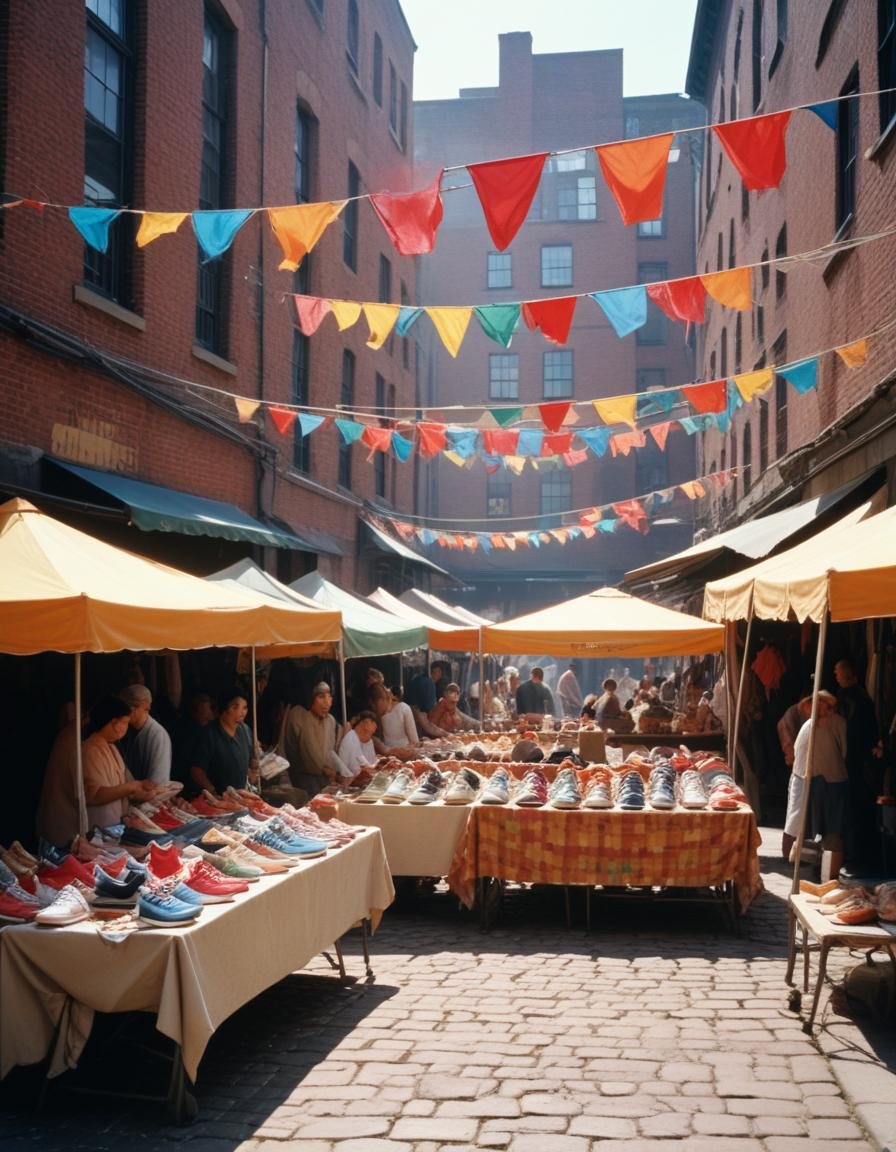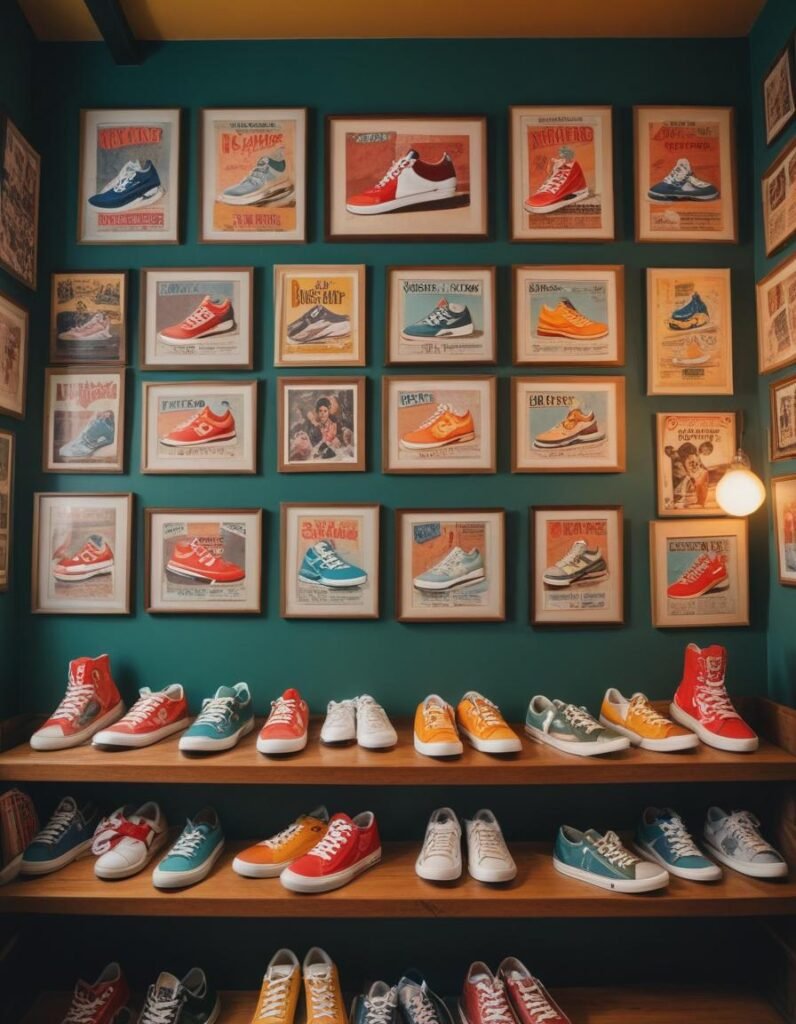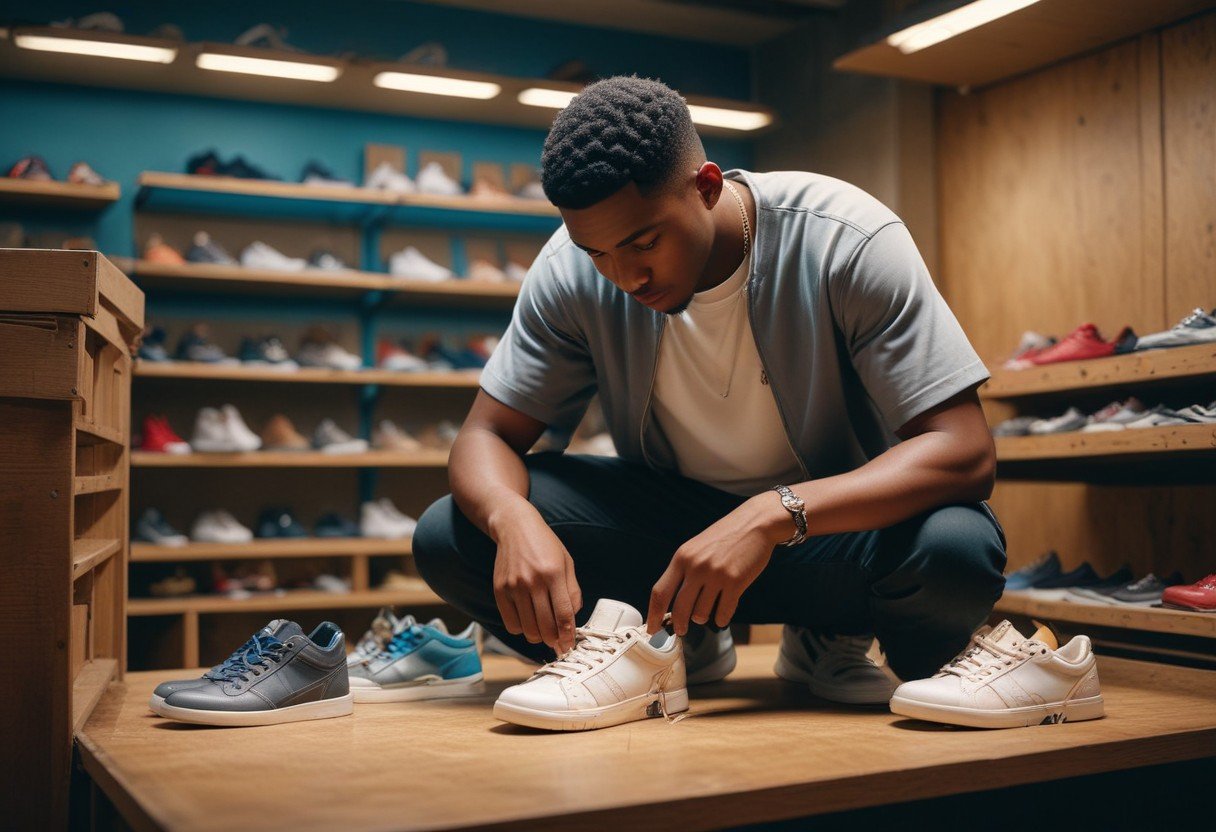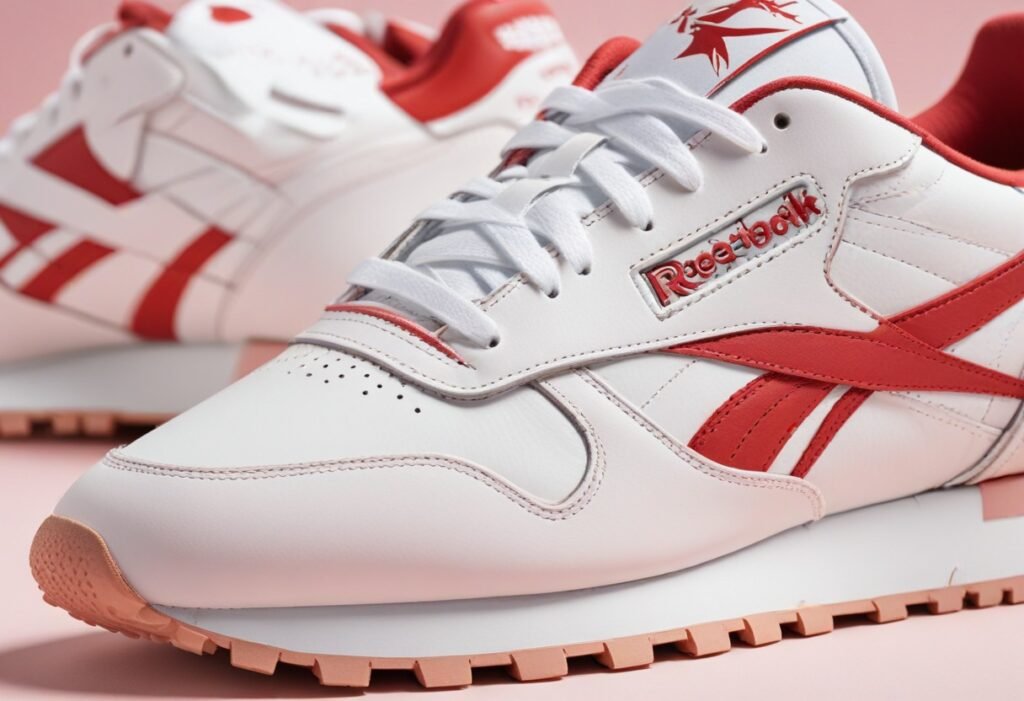Introduction to Vintage Sneakers
Are you charmed by the appeal of vintage kicks? Vintage sneakers are more than simply footwear; they represent style, history, and uniqueness. Each pair of antique shoes tells a distinct tale, reflecting the styles and cultural movements of the time. From the sleek, minimalist designs of the 1960s to the flamboyant, vivid fashions of the 1980s, these shoes take you on a nostalgic journey through time. They represent high workmanship, which is frequently achieved via the use of time-tested materials and processes. Their return in favor now is fueled by a mix of nostalgia, a desire for unique fashion statements, and a rising respect for sustainable and timeless design.
Volatile Sneakers is a part of the Amazon Services LLC Associates Program, an affiliate advertising scheme created to give websites a way to make money from listings and linking to Amazon.com. This means that whenever you click on an Amazon affiliate link on our website and make a qualifying purchase, we may earn a commission from Amazon as a referral fee. This commission comes at no additional cost to you, the consumer, and helps us keep the lights on and continue delivering high-quality content.
Evolution Through the Decades
- 1950s: Sneakers became a symbol of rebellion and youth culture.
- 1960s: The introduction of new materials and designs, with Adidas and Puma leading the charge.
- 1970s: Nike entered the scene with innovative designs and technologies.
- 1980s: Sneakers became a staple in hip-hop and street culture, with iconic releases like the Air Jordan.
- 1990s: The rise of sneaker endorsements by athletes and celebrities.

What are Vintage Sneakers?
Vintage sneakers are sports shoes that were manufactured in the past and are typically thought to be at least 20 years old, serving as a tribute to the design and craftsmanship of their respective eras. These shoes represent their era’s fashion trends, technology breakthroughs, and cultural upheavals, providing a unique look back at footwear history. Vintage sneakers are highly appreciated by collectors and fashion lovers for their rarity, historical importance, and timeless style, ranging from famous models such as the Converse Chuck Taylors and Adidas Superstars to the groundbreaking designs of early Nike Air Jordans. They frequently use materials and manufacturing processes that differ from current mass-produced shoes, adding to their distinct appearance and quality.
The Rise in Popularity of Vintage Sneakers
Vintage sneakers have had a surprising rebirth in popularity in recent years, owing to a combination of nostalgia, the particular appeal of retro designs, and a growing awareness in sustainable fashion. Vintage shoes provide a physical connection to the fashions and cultural moments of previous decades, which people fondly remember. Their distinct style, generally defined by vibrant colors and imaginative patterns, distinguishes them from current footwear. Furthermore, with an increasing emphasis on sustainability, many people are opting for vintage sneakers to decrease waste and promote a circular economy, with a focus on quality and longevity rather than rapid fashion.


The History of Sneakers
To really appreciate antique shoes, it’s important to grasp their rich history, as sneakers have evolved significantly since their birth. Sneakers, which originated in the late nineteenth century as simple rubber-soled shoes, rose to prominence in the early twentieth century, with companies such as Converse and Keds leading the way. Over the years, they’ve evolved from useful sports footwear to cultural icons, reflecting societal shifts and technology advances.
Why Vintage Sneakers are So Popular Today

Nostalgia and Cultural Significance
Vintage shoes elicit strong feelings of nostalgia, bringing individuals back to diverse periods and the key cultural landmarks that shaped them. These sneakers serve as physical reminders of historic events in sports, music, and fashion. Wearing vintage sneakers connects people to these memories and eras, whether it’s the rebellious attitude of the 1950s, the athletic advances of the 1970s, or the hip-hop inspirations of the 1980s. This link to history and culture not only makes vintage sneakers fashionable, but it also imbues them with emotional and historical value, making them prized possessions for both personal and community memory.
Unique Style and Design
Modern sneakers frequently borrow influence from traditional designs, but the original vintage items hold an attraction all their own. These vintage shoes have a particular style that is defined by unique design aspects, materials, and craftsmanship from their era, which are difficult to recreate in modern counterparts. Vintage sneakers have a distinct appearance thanks to their delicate patina, realistic wear, and historical context, which sets them apart from current replicas. Vintage sneakers are more than just a fashion statement; they are also a celebration of classic design and enduring elegance.


Quality and Craftsmanship
Many vintage shoes were made with high-quality materials and precise craftsmanship, setting them apart from today’s frequently mass-produced counterparts. These shoes were built to last, with high-quality leathers, strong stitching, and sturdy soles that add to their long-term attractiveness and utility. The attention to detail in vintage shoes represents a time when production standards valued durability and quality over cost-cutting tactics. As a consequence, these well-made shoes have weathered the test of time, making them more durable and attractive to collectors and fashion aficionados who value the combination of aesthetic appeal and outstanding craftsmanship.
Iconic Vintage Sneaker Brands
Several brands have defined the vintage sneaker market. Let’s look at some of the most influential ones.
1. Converse

Description:
Converse, particularly the Chuck Taylor All-Star, is perhaps the most iconic vintage sneaker. Its timeless design has remained largely unchanged since its debut in the 1920s.
Buy Now2. Adidas
3. Nike
4. Puma
5. Reebok
Identifying Genuine Vintage Sneakers

Key Features to Look For
When recognizing antique sneakers, look for certain qualities that are typical of the era in which they were created. Key aspects include the logo, which frequently has distinctive designs or locations that differ from current versions, as well as higher-quality materials such as premium leather or canvas. Design elements such as stitching patterns, sole structure, and hues all contribute to their authenticity and period. Furthermore, original tags, labels, and packaging can confirm the shoes’ historic status, distinguishing them from modern copies or replicas.
Common Pitfalls and How to Avoid Them
When collecting vintage sneakers, it’s critical to avoid reproductions and reissues, which might reduce the authenticity and value of your purchase. To prevent these errors, do extensive research and confirm the legitimacy of the sneakers. Look for original tags and boxes that correspond to the date of manufacturing, since they are typically signs of authentic vintage things. In addition, check the seller’s reputation and reviews to verify dependability and authenticity. Avoid offers that appear to be too good to be true, as well as those that lack extensive images or historical background. By following these guidelines, you can protect your investment and guarantee that your vintage shoe collection keeps its worth and authenticity.

Caring for Your Vintage Sneakers


Cleaning and Maintenance Tips
Proper maintenance is required to preserve the value and look of antique sneakers. Use moderate cleaning solutions designed for fragile fabrics such as leather, suede, and canvas. Avoid using harsh chemicals, bleach, or powerful detergents since they might harm the materials and degrade the general quality of the sneakers. Use a leather cleanser and conditioner to replenish the material and keep it from drying out or breaking. For suede shoes, use a suede brush to carefully remove debris and restore the fabric’s nap. After cleaning, always let shoes air dry naturally to minimize shrinking or discoloration from direct sunlight or heat sources.
Storage Solutions
To keep your vintage sneakers in good condition, store them in a cool, dry place away from direct sunlight. Sunlight may fade colors and damage materials over time. To avoid mold or mildew growth, select a storage location with stable temperature and humidity conditions. Using cedar or plastic shoe trees can help keep sneakers in shape and minimize creases in the toe box. Insert the shoe trees into the shoes after wearing them to keep them in their original shape.
Collecting Vintage Sneakers
Where to Find Vintage Sneakers

Online Marketplaces:
eBay, StockX, and GOAT are among the online marketplaces that provide a wide range of vintage shoes. These platforms provide a varied choice of brands, styles, and conditions, appealing to both experienced collectors and first-time buyers looking for one-of-a-kind pieces from various eras. eBay allows you to bid on auctions or buy straight from vendors, but StockX and GOAT specialize on certified shoes, assuring customers get genuine items.
Thrift Stores and Flea Markets:
Thrift stores and flea markets are treasure troves for finding hidden treasures of vintage shoes at discounted costs. These stores provide a wide range of footwear, frequently featuring rare and distinctive styles that may surprise even seasoned collectors. Visiting thrift stores and flea markets allows you to view sneakers in person, analyzing their condition and genuineness.
How to Start Your Collection
Starting a vintage shoe collection requires researching various models and brands such as Nike, Adidas, and Converse. Join online networks and forums to interact with other collectors and learn more about authenticating and finding rare objects. Attend sneaker conferences and browse internet markets for one-of-a-kind treasures. Use resources to learn about history, workmanship, and current trends. Build contacts within the collector community to expand your expertise and gain access to special opportunities. By immersing yourself in this interest, you will not only create a selected collection but also experience the cultural and historical trip that vintage sneakers provide.

This hands-on approach may result in interesting discoveries and unexpected treasures that add personality and history to your collection. Keep an open mind and frequent these local venues to increase your chances of finding that rare pair of vintage shoes you’ve been looking for.


Understanding Market Value and Pricing
To successfully travels the world of vintage shoes, you must first understand the elements that influence their market worth and cost. Key variables include rarity, which refers to the scarcity of a certain model, as well as the shoes’ condition—whether they are flawless or show indications of wear. Historical importance is also important, with particular shoes increasing in value because they are associated with crucial times in sports, society, or fashion. Collectors who gain knowledge in these areas may make more educated judgments, identifying chances to invest intelligently and enhance their collections with works that have long-term appeal and potential for value appreciation.
Styling Tips with Vintage Sneakers

Casual Looks
Vintage sneakers easily compliment a casual outfit, looking great with jeans and a t-shirt. This laid-back look emanates a timeless appeal that combines comfort and nostalgic charm. To complete your casual, daily look, use classic shoe types such as Converse Chuck Taylors or Adidas Superstars. Whether you’re doing errands or meeting friends for coffee, vintage sneakers give a bit of retro flare to your casual look, making them an adaptable choice for every day-to-day activity.
Streetwear Fashion
Embrace the streetwear look by seamlessly matching old sneakers with joggers, hoodies, and oversized tees. This fashionable combo combines comfort and urban flare, emphasizing the distinct style of antique footwear. Choose renowned sneaker types like Nike Air Jordans or Reebok Classics to complete the easygoing yet edgy appearance. To boost your streetwear look, layer with distinctive coats or wear throwback hats and sunglasses. Whether you’re touring the city or going on a casual excursion, combining vintage sneakers into your streetwear apparel makes a strong statement that embodies the spirit of current urban style.


Vintage Sneakers in Formal Attire
Make a dramatic fashion statement by incorporating vintage sneakers with semi-formal outfits like jackets or blazers. This unusual combination mixes traditional elegance with a bit of contemporary edge, resulting in a stunning contrast that highlights your personality. To get a balanced look, use sophisticated sneaker styles such as leather high-tops or minimalist designs in neutral hues. Pair them with tailored trousers or chinos and a fresh dress shirt for a sophisticated look with a contemporary touch. Adding vintage sneakers to your formal dress not only improves comfort but also provides a distinct style that distinguishes you in any semi-formal occasion.
Sustainability and Vintage Sneakers


Environmental Benefits
Purchasing old sneakers helps to promote a circular economy by lowering demand for new items and eliminating waste. By purchasing pre-owned sneakers, you extend the lifespan of current things while lowering the environmental effect of making new footwear. This environmentally friendly solution helps to preserve resources such as water and electricity that would otherwise be consumed in production operations. Furthermore, buying vintage sneakers promotes ethical consumption behaviors by encouraging reuse and lowering the carbon footprint connected with fashion consumption.
Reducing Waste Through Reuse
Wearing and conserving antique sneakers is a type of recycling, since it gives fresh life to outdated objects that might otherwise wind up in landfills. By wearing vintage footwear, you help to promote sustainability by prolonging the life of previously created shoes. This method decreases the amount of garbage created by discarded shoes while minimizing the environmental effect of creating new ones. Wearing old sneakers not only gives a distinctive twist to your style, but it also helps the circular economy by encouraging reuse and lowering the total carbon footprint of fashion consumption.
The Future of Vintage Sneakers

Trends to Watch
The future of vintage sneakers is bright, driven by a growing interest in retro trends and sustainable fashion. There is a growing interest in conserving and appreciating legendary shoe designs from previous decades, which reflects a larger societal movement toward nostalgia and authenticity in fashion. Collaborations between companies and artists are likely to drive this trend further, resulting in innovative interpretations and limited-edition releases that appeal to both collectors and fashion aficionados. Vintage sneakers, which combine history, style, and environmental responsibility, are poised to play an important part in determining the future of footwear as consumer tastes shift toward sustainable options.

Emerging Brands Inspired by Vintage Designs
A new generation of businesses is developing, pulling inspiration from antique aesthetics to produce modern takes on traditional shoe styles. These companies combine historical features with modern trends, appealing to a varied clientele of sneakerheads across decades. These young labels breathe new life into the footwear business by reworking classic styles. They attempt to strike a balance between legacy and current workmanship, creating sneakers that appeal to both seasoned collectors and beginners looking for classic yet distinctive footwear alternatives. This trend displays a rising admiration for vintage fashion and demonstrates retro styles’ long-lasting effect on modern sneaker culture.
Conclusion
Vintage sneakers are more than just fashion; they offer a link to history, workmanship, and sustainability in today’s society. Whether you are an established collector or new to the scene, the appeal of vintage shoes is undeniable. These shoes not only honor legendary designs from bygone decades, but also represent long-lasting quality and design innovation. Choosing vintage shoes is more than simply a fashion choice; it is a purposeful decision to promote a circular economy by prolonging the life of current items. Embrace the beauty and attraction of antique sneakers to give a touch of nostalgia and timeless elegance to your outfit while also benefiting the environment.
FAQs
How can I tell if a sneaker is truly vintage?
Look for information like as manufacture dates, original tags, and period-appropriate design features. Authentic vintage shoes frequently have a distinct patina and wear that reproductions lack
What are the most valuable vintage sneakers?
Vintage shoes have a wide range of values, but some of the most desirable are original Air Jordans, 1970s Converse Chuck Taylors, and early Adidas Stan Smiths. Rarity, condition, and historical relevance are all factors in deciding value.
How do I maintain the value of my vintage sneakers?
To retain their worth, keep them clean and in good shape. Store them correctly, avoid excessive wear, and save the original box and label.
Can I wear vintage sneakers regularly, or should they be kept for display?
While antique sneakers can be worn, repeated usage may cause degradation, especially if they are constructed of materials that deteriorate with time. Many collectors prefer to wear them seldom and instead use them as exhibition items.
What should I avoid when buying vintage sneakers?
Avoid purchasing from unconfirmed sources that may sell copies. Be wary of sneakers that appear too pristine or are priced abnormally low. Always conduct research and, if feasible, get guidance from experienced collectors.









